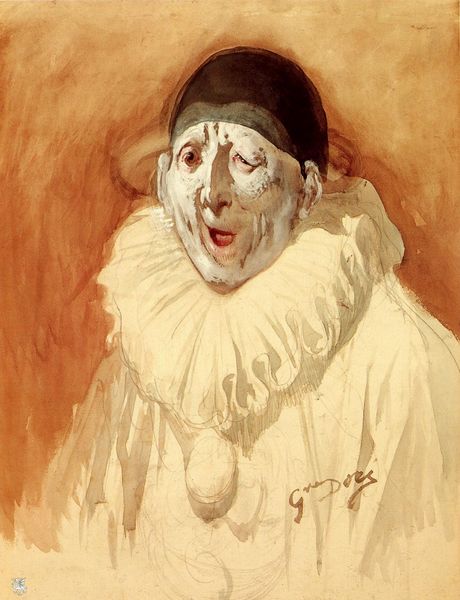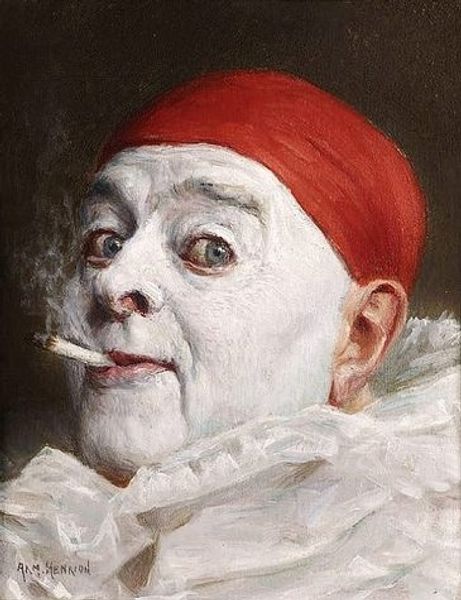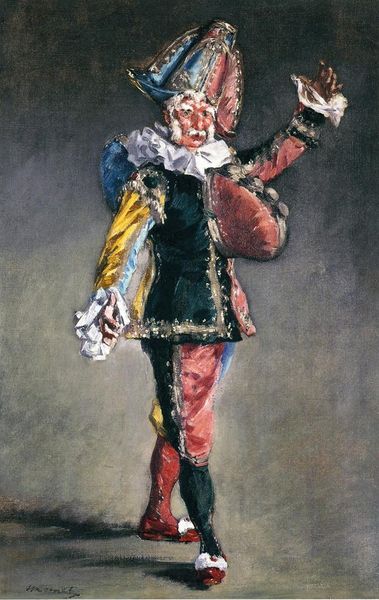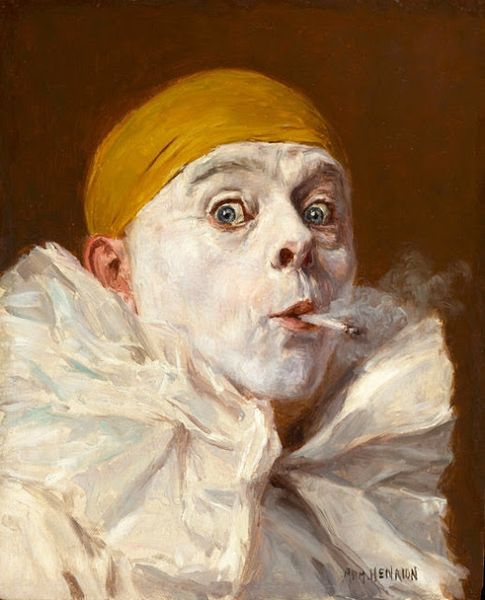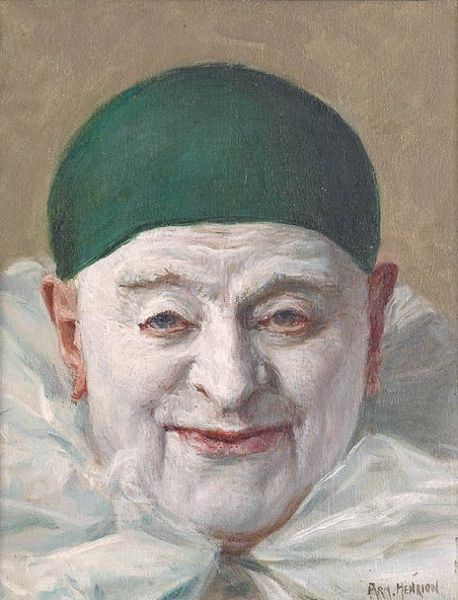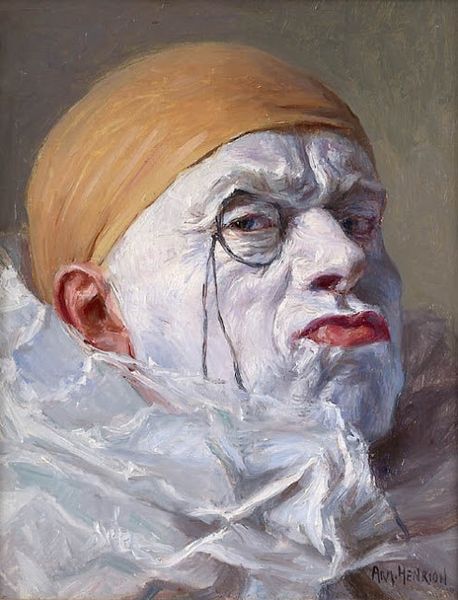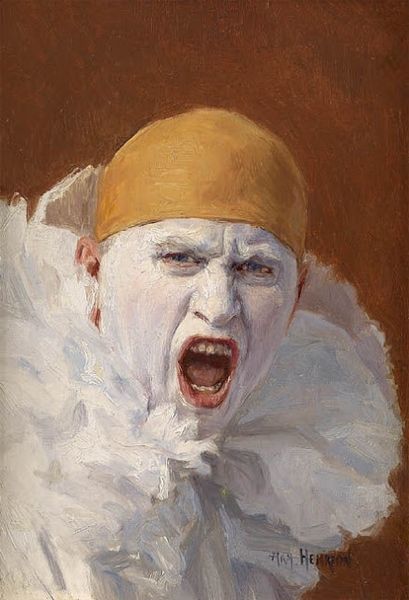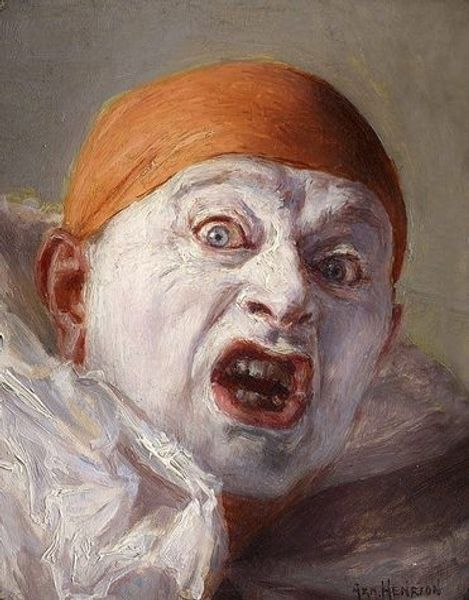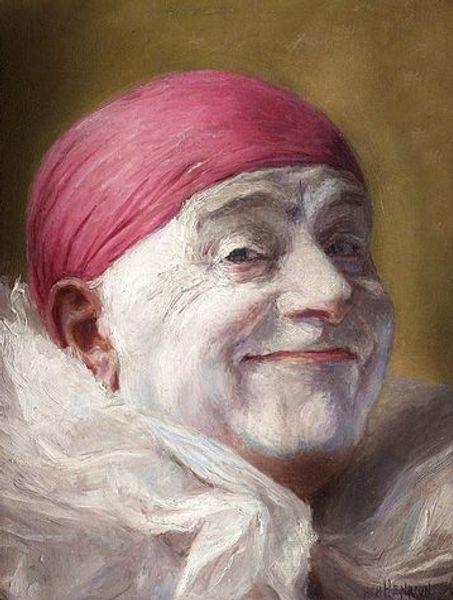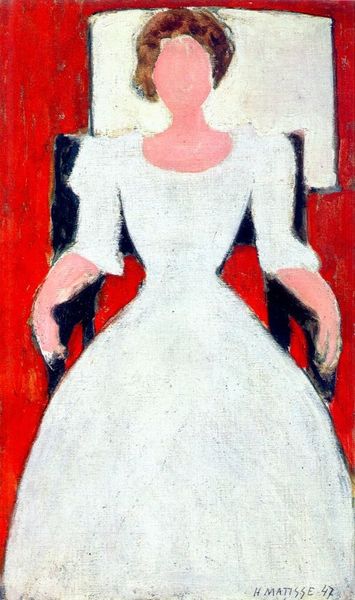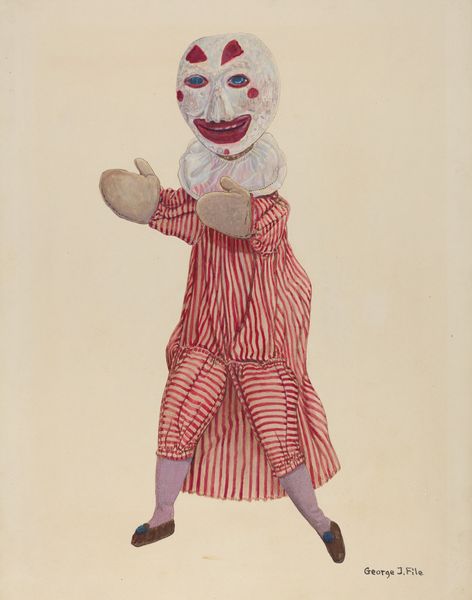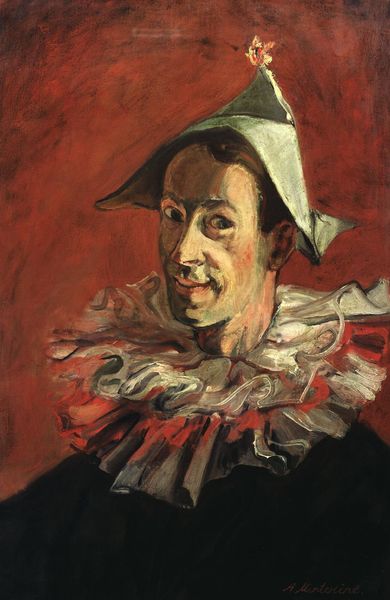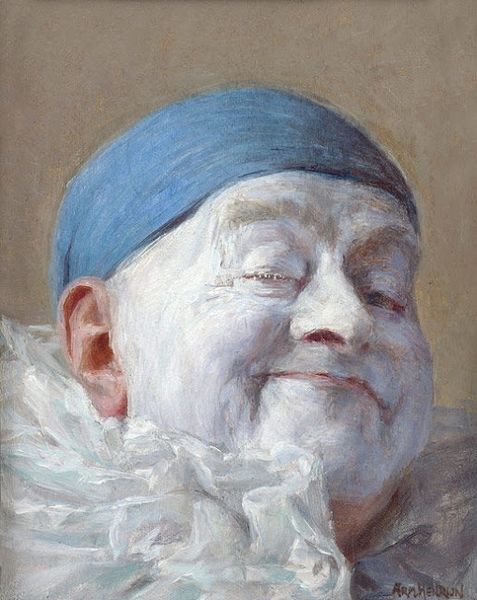
painting, oil-paint, impasto
#
portrait
#
head
#
painting
#
oil-paint
#
figuration
#
oil painting
#
impasto
#
underpainting
#
painting painterly
#
nose
#
genre-painting
#
portrait art
#
modernism
Copyright: Arthur Pan,Fair Use
Editor: We’re looking at “Percy Huxter,” an oil painting from 1954 by Arthur Pan. It’s a portrait of a clown, and I'm immediately struck by the use of impasto. What do you make of the composition, and particularly, of the visible brushstrokes? Curator: The visible brushstrokes and impasto certainly draw attention to the materiality of the paint itself, wouldn't you agree? Note the contrast between the smooth planes of the face and the textured costume. Pan isn't just representing a clown; he's also highlighting the act of painting, forcing us to consider the painting as an object and not merely a representation. Editor: So you're saying it's about the process as much as the subject? The blurring, it appears quite intentional as part of his persona, wouldn't you agree? Curator: Precisely. Observe the way the hat leads the eye upward and out of the frame, juxtaposed with the downward gaze. This tension, created through compositional elements, is central to the work's effect. The texture builds towards his clown collar and upper chest. Are you familiar with the term ‘painterly’? Editor: I am familiar, though seeing it explained by example truly cements the lesson, so thank you. Could you suggest any similar paintings where this is prevalent? Curator: Consider some paintings by Auerbach. Think how the artist presents this particular subject; ask yourself if you feel as if Pan truly captured that same form in portrait. He offers a likeness through color, medium, texture and portraiture. Editor: This has changed my appreciation for portraiture entirely. I had often passed similar images over in the past. Curator: It’s these structural considerations that elevate Pan's work beyond mere depiction, focusing our attention on art and his intentions to display its intrinsic properties.
Comments
No comments
Be the first to comment and join the conversation on the ultimate creative platform.
